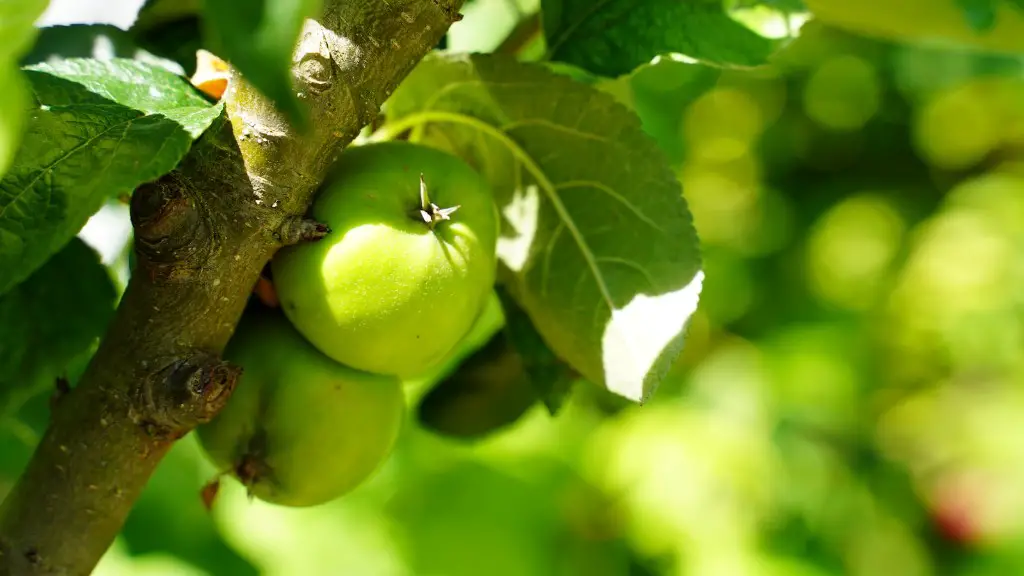Introduction
Ever noticed how your cherry tree is occasionally leaking a sticky liquid? If so, you may be wondering why your cherry tree is leaking sap, and what you should do about it. In this article, you’ll learn about the causes of cherry tree sap leaking and the best ways to protect your tree from any further damage. We’ll look at the signs, explain the key causes of cherry tree sap leaking, and provide some expert advice on how to prevent it. After reading this, you should have a better understanding of why your cherry tree is leaking sap and how you can go about preventing it.
Cherry Tree Sap Leaking Signs
One of the first signs that your cherry tree is leaking sap is visible when looking closely at the branches. You may see a thick, sticky substance collecting near the branches, covering the leaves and dripping down the trunk. Additionally, you may see a few dried, shiny spots on the bark of the trunk. These are a tell-tale sign that your cherry tree is leaking sap and should be treated immediately.
Key Causes
Understanding the key causes of cherry tree sap leaking is crucial in finding the right solutions to prevent it. The main cause of cherry tree sap leaking is a fungal disease known as “Black Knot.” This fungal disease, which is caused by a number of different species of fungi, damages the cherry tree’s bark and causes sap to leak. Additionally, it can also cause your cherry tree to be more susceptible to other diseases and pests.
Another common cause of cherry tree sap leaking is damage caused by winter temperatures. Freezes, colder temperatures, and icy winds can all break down and weaken the bark of your cherry tree, leading to sap leaking. These extreme temperatures can also damage and weaken other cherry tree parts, making them more susceptible to fungal diseases and pests.
Preventing Cherry Tree Sap Leaking
Fortunately, there are a few ways you can protect and prevent cherry tree sap leaking. One way is to make sure that your cherry tree is adequately watered during the summer – when sap is actively running through the cherries. Having your tree well-watered helps protect the tree’s bark from extreme temperatures, fungal diseases, and pests.
Additionally, you should prune off any branches that show obvious signs of fungus or pests (such as Black Knot). Removing infected branches helps to stop the disease from spreading, while also making it easier to monitor new symptoms.
It is also important to monitor your cherry tree’s health year-round. Conduct regular checks of the trunk and branches to monitor new symptoms and treat them as quickly as possible. Additionally, you should apply a fungicide or insecticide during the spring and summer months to protect against disease-causing fungi and pests.
Winter Protection
Protecting your cherry tree from extreme winter temperatures is one of the most important steps to preventing sap leaking. The best way to do this is to cover it with a durable tarp or burlap, and to encourage good air circulation around the tree. It is also important to water your cherry tree consistently throughout the fall and winter months, as doing so helps to insulate the tree from extreme temperatures.
Treating Inflicted Trees
For cherry trees that have already been inflicted with fungus or pests, there are a few steps you can take to prevent further damage and sap leaking. Immediately remove and prune away any obviously infected branches, and treat the remaining branches with a fungicide or insecticide. Additionally, it is important to monitor the tree’s health year-round – check for new symptoms and treat them immediately.
Advanced Disease Prevention Methods
When dealing with a potential fungal infection, it helps to get professional assistance. A certified arborist or tree health specialist can inspect the tree and recommend advanced methods of prevention and treatment, such as soil amendments, fungicides or insecticides, or selected tree pruning. Additionally, your local Cooperative Extension Service can recommend specific sprays and soil treatments for different fungal diseases common to your area.
Q&A with an Arborist
We spoke to certified arborist and tree health specialist, Julia Johnson, to get her professional insights into why cherry trees leak sap and how to protect them from further damage.
Q: What is the main cause for sap leaking from a cherry tree?
A: The main cause of sap leaking from a cherry tree is a fungal disease called Black Knot. It weakens and damages the tree’s bark, leading to sap leaking. Additionally, severe winter temperatures can damage the tree and cause sap leaking.
Q: How can I protect my cherry tree from further damage?
A: Make sure your cherry tree is well-watered, especially during the summer – when sap is actively running through the cherries. Additionally, prune off any branches showing obvious signs of fungus or pests, and apply a fungicide or insecticide during the spring and summer months. For additional protection during winter, cover the tree with a durable tarp or burlap, and water the tree regularly.
Conclusion
Cherry trees leaking sap can cause significant damage, but with the right steps, it can be prevented. In conclusion, the main causes of cherry tree sap leaking are fungal disease and extreme winter temperatures. To protect your tree from further damage, ensure it is adequately watered, prune away any infected branches, and apply a fungicide or insecticide during the spring and summer months. When dealing with a possible infection, get expert help and advice from certified arborists or tree specialists. With this knowledge, you can help protect your cherry trees and keep them healthy for years to come.


